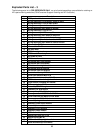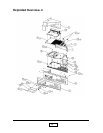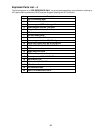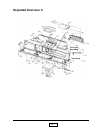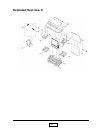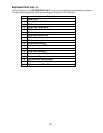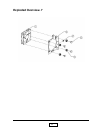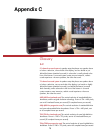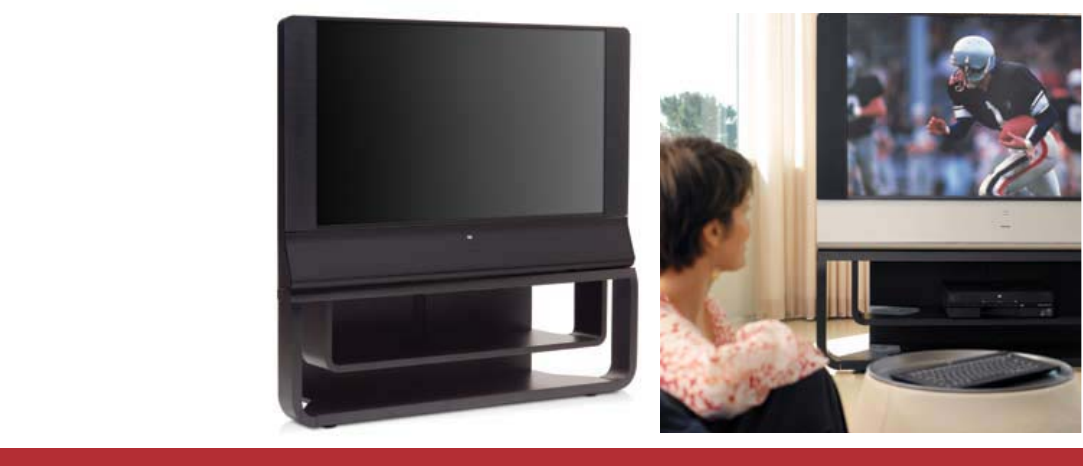
Glossary
DLP
™
is a Texas Instruments technology through which color images are made
by shining colored light onto a digital micromirror device (DMD) impregnated
with small, movable mirrors. Each micromirror is responsible for an individual
pixel and can oscillate several thousand times per second. The process reduces
“pixelation” by increasing “active area” of the pixel. Major advantages:
excellent, bright picture with good black quality; better visibility from side
viewing angles; capable of displaying HDTV at full resolution; produces less
heat; more reliable; no burn in; no maintenance. Major disadvantages:
comparatively expensive; limited viewing angle.
LCOS is an emerging LCD-based technology that reflects rather than directly
transmits light. LCOS projectors direct light through a series of polarizers,
again using three separate LCD panels, one for each RGB color. Major
advantages: excellent picture quality; high resolutions; slim profile. Major
disadvantages: expensive; poor black quality.
0–9
5.1-channel surround system A speaker setup that places one speaker above
or below a television, on each side of the display, and two beside or just
behind the listener (standard surround). A subwoofer is usually placed to the
front of the listener. A surround system creates a more immersive, realistic
sound experience—the more speakers, the richer the sound.
7.1-channel surround system A speaker setup that places one speaker above
or below a television, one on each side of the display, two beside or slightly
behind the listener (standard surround), two behind the listener (surround
back channels), and a subwoofer to the front of the listener. A surround
system creates a more immersive, realistic sound experience—the more
speakers, the richer the sound.
480i (480-line interlaced scan) The vertical resolution of standard-definition
broadcasts, and the original resolution technology. Picture is 704 x 480 pixels,
sent at 60 interlaced frames per second (30 complete frames per second).
480p (480-line progressive scan) The vertical resolution of standard-definition
and some enhanced-definition broadcasts. Picture is 704 x 480 pixels, sent
at 60 complete frames per second.
720i (720-line interlaced scan) The vertical resolution of some high-definition
broadcasts. Picture is 1280 x 720 pixels, sent at 60 interlaced frames per
second (30 complete frames per second).
720p (720-line progressive scan) The vertical resolution of some high-definition
broadcasts. Picture is 1280 x 720 pixels, sent at 60 complete frames per second.
Appendix C
75



